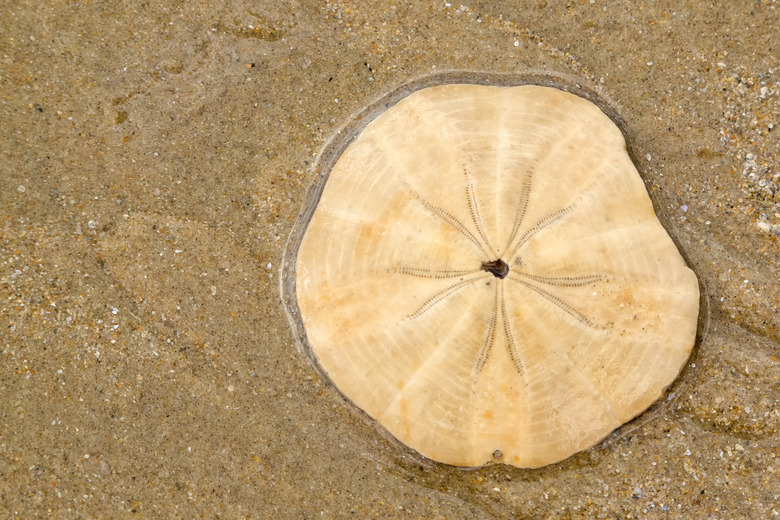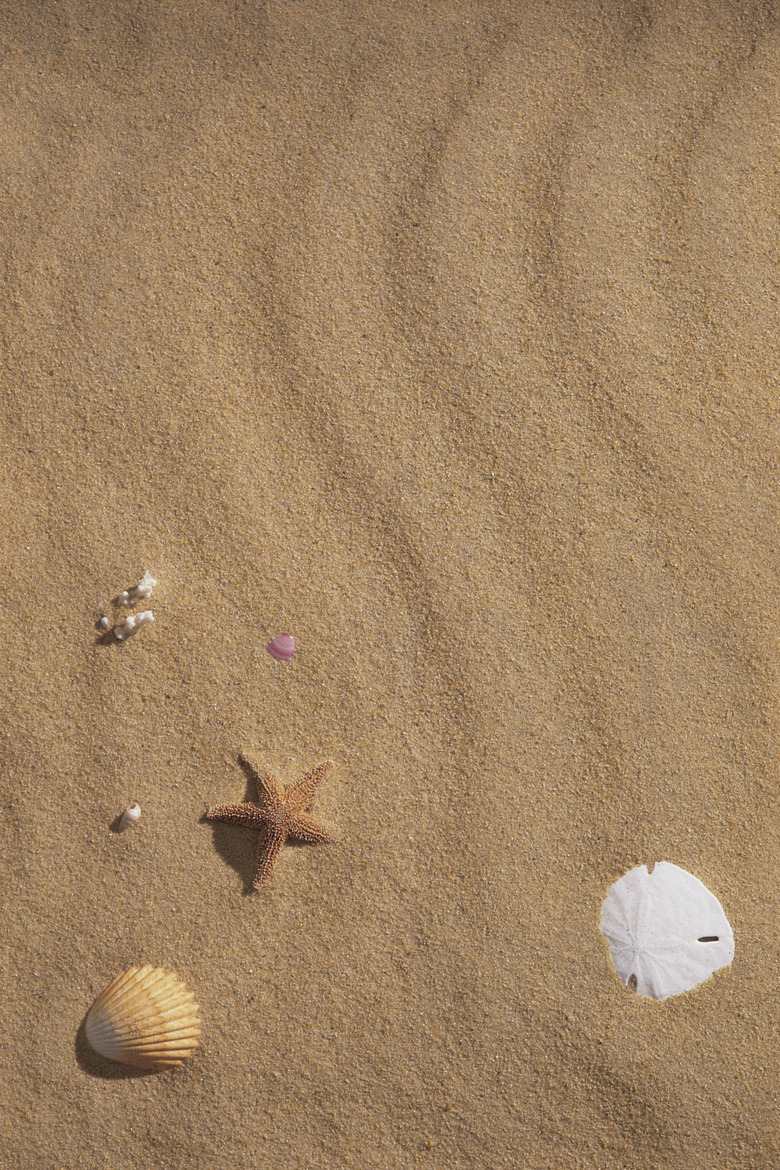How To Find Sand Dollars At The Beach
Scattered just along the high-tide waterline on low-tide beaches at either end of the country you can sometimes find flat discs with a faint five-pointed star pattern on one side. Although they break easy and seem like chalk or compacted sand, they are actually the tests — skeletons — of a sea creature called a sand dollar. Shell collectors prize sand dollars for their beauty, but you need to handle them carefully to take one home intact.
Search for Sand Dollars
Search for Sand Dollars
When a sand dollar dies and decays, its skeleton often washes up onto the ocean shore, especially if there's been a storm the night before. To find a sand dollar's skeleton, walk along the beach at low tide, paying close attention to the area just below the high-tide line. Look for round patches or depressions in the sand; these may turn out to be sand dollars on closer inspection. If the skeleton has been on the beach for a long time, it may have bleached to a pale, almost white color, which makes it easier to spot.
The Sand Dollar
The Sand Dollar
Sand dollars live within the sandy or muddy bottoms of shallow ocean water, often in dense colonies. Although they look very different from sea urchins, they're closely related. Like sea urchins, they are covered with spines, but a sand dollar's spines are soft and fine, more like a velvety fur. These spines convey tiny particles of food to their mouths located on the underside of their bodies. When predators approach, sand dollars burrow into the sand to escape.
Collecting Sand Dollars
Collecting Sand Dollars
When collecting sand dollar skeletons, never collect live specimens, which are typically thicker than their skeletons. Not only is collecting live sand dollars harmful to the local environment, it is illegal in many parts of the United States. If the sand dollar still has its spines and feet, return it to the water. But when the sand dollar is just a skeleton, gently remove it from the sand using your fingers or a flat implement such as a knife. Store it in a container that protects its fragility, as the skeleton can break apart like a dry cracker.
Preserving Sand Dollar Skeletons
Preserving Sand Dollar Skeletons
Once you've got the test home, rinse it in water. The water clouds at first, keep adding fresh water until it runs clear. Once you've rinsed the test, soak it for about 15 minutes in a solution of water and 30 percent bleach and water, which should whiten the exoskeleton without damaging it. Allow the sand dollar to dry.
Once the skeleton is dry, prevent future damage by applying a mixture of water and white glue to the surface with a paint brush. Allow each side to dry before painting the other one with the glue mixture, which dries clear. You can also spray acrylic varnish or shellac to help protect the skeletons from chipping or breaking.
Cite This Article
MLA
Holloway, James. "How To Find Sand Dollars At The Beach" sciencing.com, https://www.sciencing.com/find-sand-dollars-17517/. 11 April 2018.
APA
Holloway, James. (2018, April 11). How To Find Sand Dollars At The Beach. sciencing.com. Retrieved from https://www.sciencing.com/find-sand-dollars-17517/
Chicago
Holloway, James. How To Find Sand Dollars At The Beach last modified March 24, 2022. https://www.sciencing.com/find-sand-dollars-17517/




